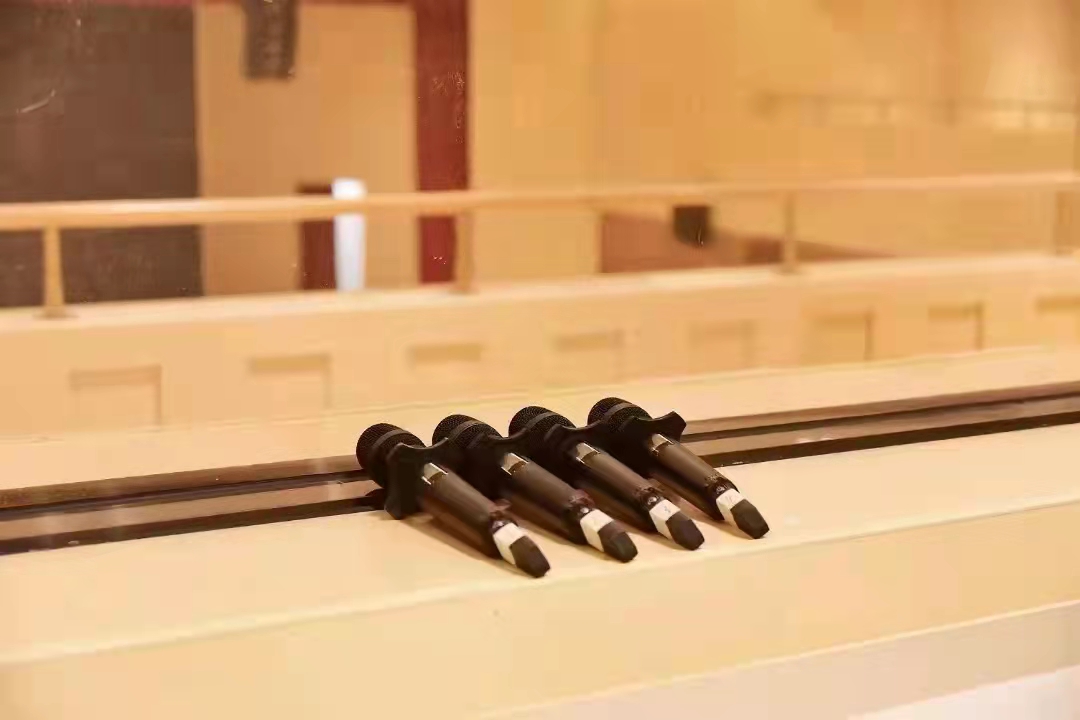

Chat now

As we all know, when attending a conference or giving a speech, many people have been disturbed by the accidental whistling of the microphone and the vague sound reinforcement. So how to choose the microphone and make a reasonable choice when constructing the conference system project?

The sound in the conference room usually needs to be bright, clear and moderate in loudness. When setting up the venue, speakers cannot go to the site to audition. Therefore, in order to achieve a bright and clear sound effect during live sound reinforcement (the loudness is just right but not the demand for howling), there is a certain degree of knowledge in the method of microphone selection.
Since different microphones have different effects on different sound sources, it is necessary to thoroughly understand the technical characteristics, function quality and applicable occasions of the microphone before choosing a microphone. In addition to the electroacoustic indicators such as the sensitivity of the microphone, the matching of the output impedance and the input impedance of the mixer, the microphone's directional characteristics, frequency response characteristics and the shape of the microphone should also be considered in the conference room.

For directivity, hyperheart-shaped sounds are suitable for distant picking up, heart-shaped sounds are suitable for most cases, and non-directional microphones are not suitable for speech picking up because simplicity will lead to echo. In addition, in the conference room according to the planning of the speaker to select pointing to the appropriate characteristics of the microphone.
For centralized or semi-centralized sound amplification systems, the pointing characteristics of microphones should be heart-shaped or super-heart-shaped. Scattered planning of the sound amplification system, usually should choose the heart microphone. If the microphone is far away from the sound amplification box, and the hall reverberation time is not too long, you can choose non-directional microphone. When the sound source is very close to the microphone, the skill indicator can be used to eliminate the proximity effect of the heart-shaped microphone.

In terms of the frequency response characteristics of the microphone, the microphone with low static skill goal and good transient characteristics is usually better than the microphone with high static skill goal and poor transient characteristics. A dull voice is often accentuated by overshortening.
Of course, it can be compensated by electronic proofreading (in the sound transmission circuit). This has no effect on the voice with too low audio, but there are restrictions on the movement back and forth. The distance between the speaker and the microphone must be stable, otherwise there will be low frequency components change. The ratio between the direct sound and the reverberant sound (in a "lively" sound field with an acoustic condition) will also change.
Microphones with a large number of peaks between 60O0-9000Hz will make the accent with azole accent become more toothy. Of course, you can also use electronic methods to proofread, but you have to pay for the value of the dead point at the top. Therefore, there is usually no need to use high-quality dynamic microphones in conference rooms.

Over the years, with the enlargement and widening of conference tables, most of them now choose condenser gooseneck microphones. In this way, when the conference table is relatively wide, the speaker will not be pushed to the side of the table and no sound will be picked up. In addition, the head of the condenser microphone is relatively small, so that it does not cover the face of the speaker is also one of the reasons for being selected.

 【DSPPA Demo】PAVA8000 EN54 Voice Evacuation SystemNovember 12, 2020Abstract: DSPPA PAVA8000 EN54 Voice Evacuation SystemToday, we are gonna show you a demo about our PAVA8000 EN54 Voice Evacuation System.PAVA8000EN54 Voice Evacuation System can not only support manua...view
【DSPPA Demo】PAVA8000 EN54 Voice Evacuation SystemNovember 12, 2020Abstract: DSPPA PAVA8000 EN54 Voice Evacuation SystemToday, we are gonna show you a demo about our PAVA8000 EN54 Voice Evacuation System.PAVA8000EN54 Voice Evacuation System can not only support manua...view The National Standard Approval Meeting held in BeijingJuly 19, 2019The National Standard Approval Meeting held in BeijingThe approval meeting of the National StandardTechnical standard of public address system engineeringis held in Beijing on July 16, 2019. Xue Chang...view
The National Standard Approval Meeting held in BeijingJuly 19, 2019The National Standard Approval Meeting held in BeijingThe approval meeting of the National StandardTechnical standard of public address system engineeringis held in Beijing on July 16, 2019. Xue Chang...view